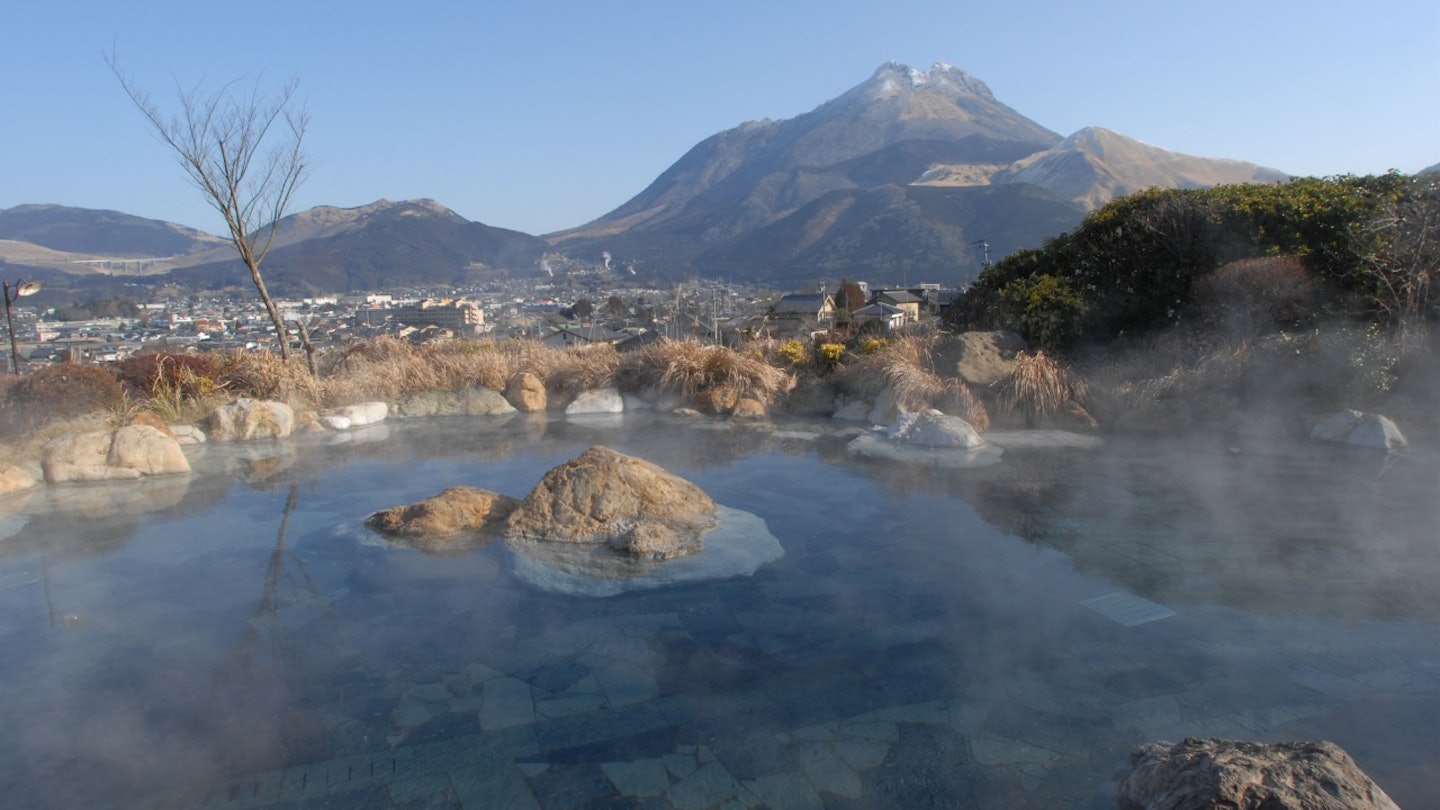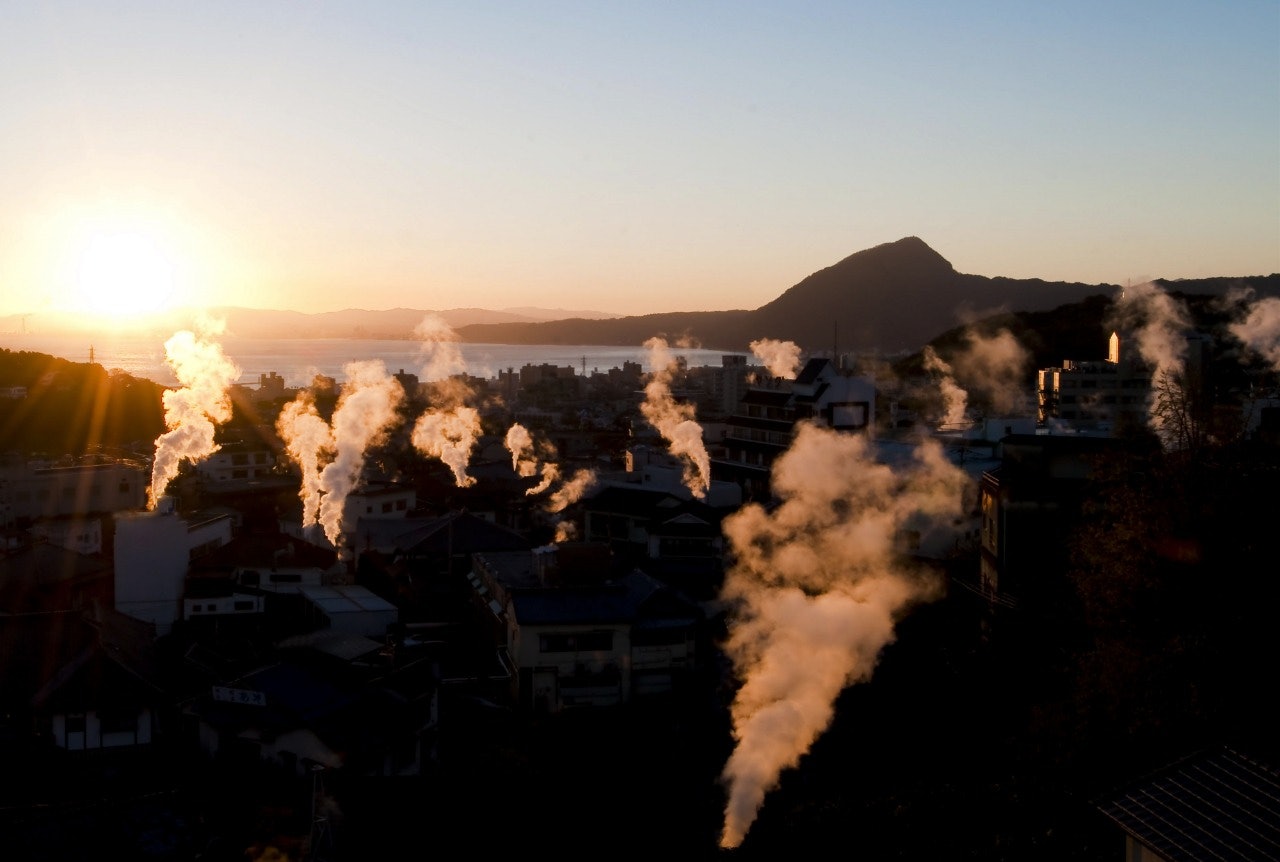
Oita's best onsen: a guide to bathing in Beppu and beyond
Aug 26, 2019 • 5 min read

Lowering yourself into a steaming outdoor bath filled with rejuvenating natural hot-spring water; soaking your muscles while gazing up at clear daytime skies or glistening twilight stars; relaxing in the serenity of nature – there’s no doubt about it: when you go to Japan, you must visit an onsen.
And if it’s a genuine onsen experience you’re after, look no further than Oita. Located in the northeastern part of Kyushu, the Prefecture boasts the highest number of natural hot-spring sources in all of Japan. Here’s how find the best spots and get prepared for the adventure.

Nature’s gift
Onsen are natural hot-spring pools, located in the thousands across Japan due to the country’s ample volcanic activity. For centuries people have journeyed to onsen towns in the belief that the mixture of minerals in the water have medicinal effects. In order for a hot spring to be classified as an onsen, it technically must contain at least one of 19 designated chemical elements and be warmer than 25 degrees Celsius when it comes out of the ground.
Onsen come in many different shapes, sizes and forms, from completely natural pools (always be careful of the temperatures at these locations – some will be scalding hot and should never be entered without proper knowledge and awareness) to indoor and outdoor baths in hotels, ryokans and spas. Rotenburo are outside baths, and can be the most authentic and memorable experiences, often offering beautiful views. Some towns include small pools called ashiyu where visitors can stop to soak their feet.

Onsen etiquette
Visiting an onsen is by far one of the most unique and rewarding experiences available in Japan, but it can be a little intimating for the uninitiated.
The first thing to bear in mind is the country’s relationship with tattoos. Historically, body art in Japan has been associated with criminality, and even today, many onsen do not permit bathers with tattoos. This is changing of course, with some baths now operating a ‘tattoo friendly’ policy. Oita, which has a history of accepting those with tattoos, recently launched a website with a function that allows visitors to easily search for these baths.
Basic etiquette at an onsen includes making sure you shower before entering a bath (facilities will be provided in the majority of cases). Showers are equipped with a stool and a bucket, and guests wash with soap and water. Sitting is standard practice here, and standing can even be considered rude. Most onsen have separate areas for male and female bathers, or designated times for each to bathe. The vast majority do not allow bathing suits either, which means your experience will be completely nude. While this can be daunting the first time, once you strip off and get in, you’ll be able to embrace the freedom of the experience.
Large towels are left in the changing rooms, and small hand towels can be brought to the bath to be used for modesty’s sake as you get in – but towels should not enter the water. Place towels off to the side or on your head. Long hair should be tied up to avoid being in the water. Enter the onsen slowly, as the temperatures can be high. Drink water before and after, as the heat can make you light-headed. Once in there, relax! Baths can be social places, and people can be seen quietly chatting or sitting back in blissful silence.

Oita’s offerings
Beppu is one of the most popular and well-loved onsen spots in all of Japan. With eight designated onsen areas, it has prospered as a resort destination since ancient times. Onsen here contain eight different types of special springs that have been classified as having therapeutic purposes, including chloride springs, hydrogen carbonate springs, sulphate springs, iron springs and sulphur springs.
Takegawara Onsen in the city’s downtown commercial district dates back to the Meiji Period and is thus a local icon. The bath here is simple, and very hot. Guests scoop water out with a bucket before pouring it over themselves and jumping in. It also has a sand bath that sees visitors lying down in a narrow trench and being buried up to their necks in heated sand.

Right by the beach is Kitahama Termas Onsen, a large hot spring facility where visitors have different bathing options, including jacuzzis, steam baths, mist saunas, outdoor baths, and utase-yu (waterfall baths). The ‘outdoor health bath’ has mixed-gender bathing where customers wear bathing suits.
The neighbouring Yufu City also offers attractive resorts such as Yufuin Onsen and Yunohira Onsen. There are also plenty of options in the surrounding areas outside Beppu. Further west in Yamanami area is the Ukenokuchi Onsen at Ryokan Shinseikan, featuring golden water surrounded by trees. Below Yufu is Nagayu Hot Spring Town, which includes Gani-yu, a rustic mixed-gender outdoor bath along the river. While it is open 24 hours, be sure to bring towels, as it does not have any facilities.

Welcome to ‘hells’
Those who want to see another side of onsen culture can also explore the jigoku meguri or Beppu Hell Circuit, a series of seven extreme hot-spring stops that have become popular tourist attractions.
Set up in two groups with five at Kannawa (over 4km northwest of Beppu Station) and two approximately 2.5km further north, the former include the impossibly blue Umi Jigoku (sea hell); Oniishibōzu Jigoku, where the bubbling mud looks like a monk's shaved head; Shira-ike Jigoku; and Kamado Jigoku, so named because it was once used for cooking (kamado means stove in Japanese). Umi Jigoku, Chinoike Jigoku (Blood Pond Hell), Tatsumaki Jigoku (Tornado Hell), and Shiraike Jigoku (White Pond Hell) have been selected as National Scenic Beauties of Japan for their aesthetics and distinctive colours.

Culinary curiosities
Aside from bathing, the hot, mineral rich waters of onsen are also used to cook unique dishes. Onsen cuisine (Jigoku-mushi Ryori) has been prepared using the steam from the hells since the Edo Period, and today, visitors can take part in experiences where they sample different dishes.
A speciality seen at many towns is the onsen tamago, an egg that has been slow-cooked in the water and steam. A popular post-bath custom is to drink milk based-beverages such as fruit gyuunyuu (fruit milk) or coffee gyuunyuu (coffee milk). Many towns have drinkable springs, such as the Colonade in Taketa City.
Produced by Lonely Planet for Tourism Oita. All editorial views are those of Lonely Planet alone and reflect our policy of editorial independence and impartiality.















